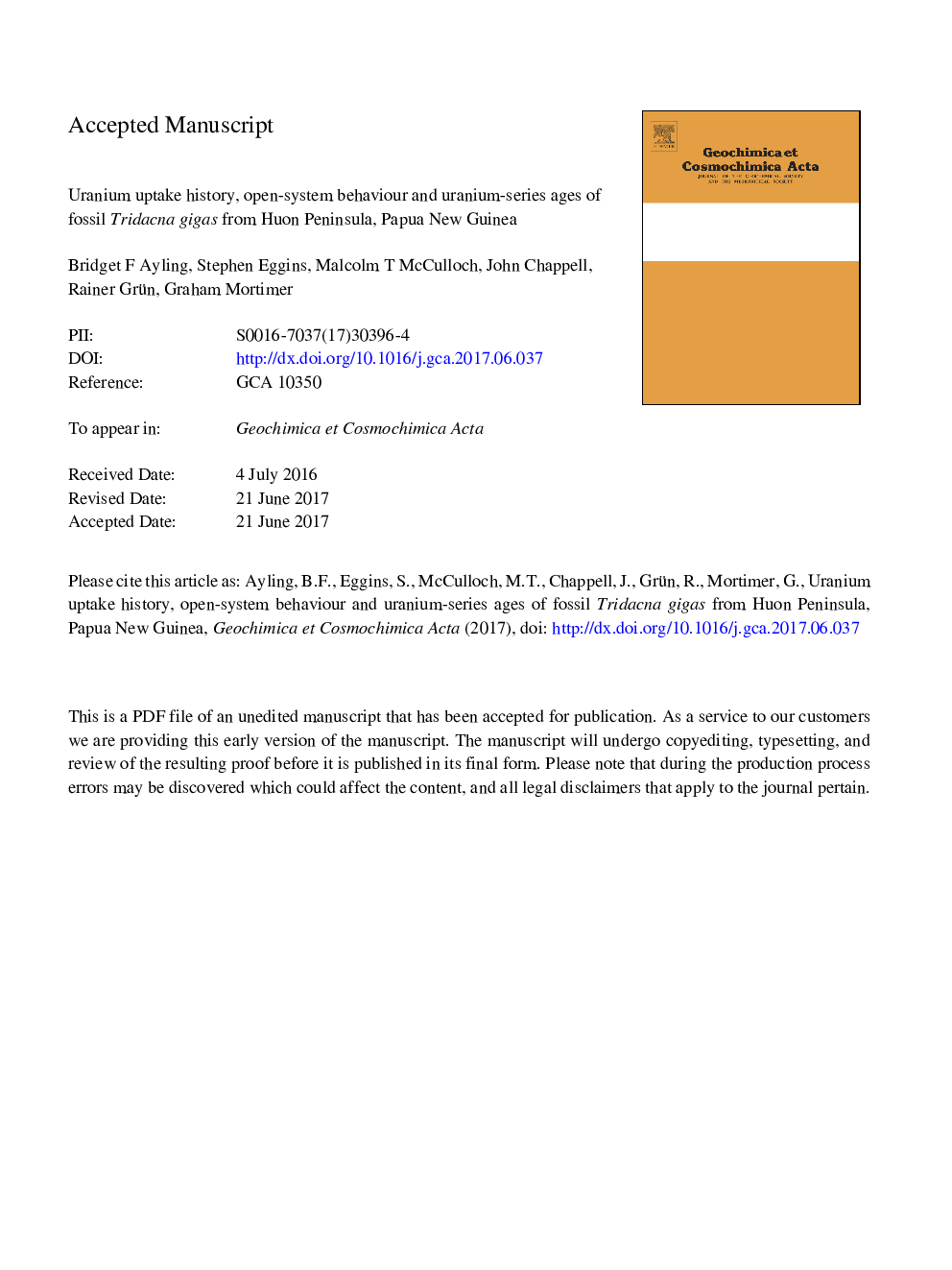| Article ID | Journal | Published Year | Pages | File Type |
|---|---|---|---|---|
| 5783344 | Geochimica et Cosmochimica Acta | 2017 | 45 Pages |
Abstract
Molluscs incorporate negligible uranium into their skeleton while they are living, with any uranium uptake occurring post-mortem. As such, closed-system U-series dating of molluscs is unlikely to provide reliable age constraints for marine deposits. Even the application of open-system U-series modelling is challenging, because uranium uptake and loss histories can affect time-integrated uranium distributions and are difficult to constrain. We investigate the chemical and isotopic distribution of uranium in fossil Tridacna gigas (giant clams) from Marine Isotope Stage (MIS) 5e (128-116Â ka) and MIS 11 (424-374Â ka) reefs at Huon Peninsula in Papua New Guinea. The large size of the clams enables detailed chemical and isotopic mapping of uranium using LA-ICPMS and LA-MC-ICPMS techniques. Within each fossil Tridacna specimen, marked differences in uranium concentrations are observed across the three Tridacna growth zones (outer, inner, hinge), with the outer and hinge zones being relatively enriched. In MIS 5e and MIS 11 Tridacna, the outer and hinge zones contain approximately 1Â ppm and 5Â ppm uranium respectively. In addition to uptake of uranium, loss of uranium appears prevalent, especially in the MIS 11 specimens. The effect of uranium loss is to elevate measured [230Th/238U] values with little effect on [234U/238U] values. Closed-system age estimates are on average 50% too young for the MIS 5e Tridacna, and 25% too young for the MIS 11 Tridacna. A complex, multi-stage uptake and loss history is interpreted for the fossil Tridacna and we demonstrate that they cannot provide independent, reliable geochronological controls on the timing of past reef growth at Huon Peninsula.
Related Topics
Physical Sciences and Engineering
Earth and Planetary Sciences
Geochemistry and Petrology
Authors
Bridget F. Ayling, Stephen Eggins, Malcolm T. McCulloch, John Chappell, Rainer Grün, Graham Mortimer,
